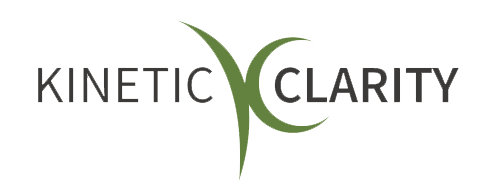The Recent Evolution of Leadership Toward Collaboration
Diving into the transformative era of collaborative leadership

There have been significant shifts and developments over the years in the journey of leadership. The image of a leader, once synonymous with command and control, is now being reimagined. A more democratic, participatory style of leadership is gaining prominence, marking a definitive shift from an era of administrative power to one of collaboration.
This recent evolution of leadership is shaping the future of work, promoting a sense of unity and shared responsibility, and fundamentally changing the way we perceive the role of a leader.
Let's delve into this transformative era of collaborative leadership, its impacts, and how modern tools like Emergenetics play a pivotal role in this transformation.
A Deeper Dive into Collaborative vs. Administrative Leadership
Historically, leadership has primarily been administrative. The focus was mainly on control, with orders flowing from top to bottom. Managers would delegate tasks to their subordinates, who were expected to fulfill them without question. However, the narrative has gradually shifted.
Collaborative leadership signifies a shift from less delegation to more active participation. Leaders are no longer solely decision-makers or authority figures but facilitators of collective decision-making. They're working side by side with their teams, sharing responsibilities and credit. This approach fosters a greater sense of teamwork and nurtures an environment where everyone feels valued and heard.
The Role of Technology
Technology has been a game-changer in the world of leadership. With the advent of various collaboration tools and virtual platforms, leaders and teams can connect and work together seamlessly, regardless of their geographic locations. It has opened new possibilities for team coaching, as real-time interactions have become more feasible.
Furthermore, technology has also streamlined information sharing, fostering an environment of transparency. This further underscores the shift toward collaborative leadership, where open communication is not just encouraged but essential.
Today’s Leadership is About Empowerment
Leadership in today's world is no longer about power – it's about empowerment. Collaborative leaders empower their team members by promoting a learning culture where mistakes are seen as opportunities for growth rather than failures. They create a safe space for everyone to voice their ideas, thoughts, and concerns.
The result? Teams that feel more engaged, motivated, and committed to their work. They're not just following orders; they're actively participating in shaping the future of the organization. This new leadership model is a win-win for all involved, as it enhances productivity and promotes job satisfaction and employee retention.
How to Practice More Collaborative Leadership
Embracing a more collaborative leadership style involves a shift in mindset and practice. Here are some key steps:
- Foster Open Communication: Encourage team members to share their thoughts, ideas, and concerns without fear of retribution.
- Promote Active Participation: Instead of delegating tasks, involve team members in the decision-making process. This not only boosts their confidence but also results in more informed decisions.
- Invest in Team Coaching: Develop a culture of continuous learning and improvement. Encourage peer coaching and invest in professional team coaching services when needed.
- Encourage Interdependence: Reinforce the idea that everyone's role is interconnected and that success is achieved through collective effort.
Rethinking Leadership Development
The shift towards collaborative leadership calls for a holistic rethink of leadership development strategies. Traditional models, focused heavily on individual achievement and hierarchical authority, are giving way to more complex and nuanced approaches.
In the collaborative leadership model, leaders aren’t just 'in charge.' They become a part of the team, facilitating communication, guiding consensus, and nurturing an environment where everyone feels heard and valued. This shift impacts leadership development in several ways:
- New Skill Sets: Leaders need to master a broader range of skills. These include active listening, empathetic communication, conflict resolution, and cultivating an inclusive and respectful environment.
- The Power of Facilitation: The role of a leader is evolving from a directive role to a more facilitative one. This demands a new approach to problem-solving, decision-making, and even how we manage meetings. It's about creating an environment where everyone feels encouraged and empowered to contribute.
- Continuous Learning: Today's business environment is everchanging, which means leaders must be lifelong learners. This includes keeping updated about technological advancements, industry trends, and the changing dynamics of workplace culture.
Emergenetics: An Essential Tool for Leadership Development
When delving into the facets of collaborative leadership, it's essential to acknowledge the tools and frameworks that have become instrumental in guiding this transformative journey. One such pivotal tool is Emergenetics.
Emergenetics is a globally recognized profiling tool, developed on the premise that merging our behavior ( emerging) with our genetic makeup (genetics) provides a comprehensive understanding of a person's cognitive and behavioral preferences. Through this lens, leaders are equipped with the insights they need to understand not just their own inherent thought processes and behavioral traits but those of their teams as well.
In an era where the nuances of leadership are shifting rapidly, tools like Emergenetics offer a structured approach to understanding and nurturing the dynamics of a diverse team. But how does it fit into our current discourse on collaborative leadership? Let's explore further.
Shaping Modern Leadership Development
Emergenetics is an exceptional tool that is shaping modern leadership development. This behavioral and thinking preferences profile offers a rich understanding of the diverse attributes present within a team. Emergenetics sheds light on seven key attributes - analytical, structural, social, conceptual, expressiveness, assertiveness, and flexibility - and by doing so, it helps leaders to appreciate the diversity of their teams and foster an environment of inclusivity and collaboration.
Using the Emergenetics profile, leaders can enhance their self-awareness and gain critical insights into their thinking and behavioral patterns. This self-understanding can significantly affect how they lead, communicate, and react in varying situations. Moreover, it helps leaders recognize and respect their team members' diverse thinking and behavioral patterns, which results in improved team dynamics and productivity.
Emergenetics goes a step further by providing a platform for leaders to tailor their communication styles. By resonating more effectively with their team members, leaders can improve understanding and engagement within their teams.
Lastly, Emergenetics offers leaders the opportunity to drive personal development. By leveraging insights about their thinking and behavioral preferences, leaders can devise personalized development plans that amplify their strengths and address areas for growth.
In the journey towards collaborative leadership, tools like Emergenetics are proving indispensable. They equip leaders to foster an environment of mutual respect, active participation, and shared success, truly embodying the essence of the modern leadership paradigm.
Wrapping Up
The evolution of leadership toward collaboration represents a fundamental shift in how organizations function. It's a response to a world that is increasingly interconnected, where innovation springs from diverse perspectives, and where technology is blurring traditional hierarchies.
The new wave of leadership is about fostering an environment of empowerment, inclusivity, and active participation. It's about transforming the very essence of work, turning it into a shared journey toward achieving common goals.
Contact us to talk about your executive coaching needs.
We will get back to you as soon as possible.
Please try again later.
Kinetic Clarity | All Rights Reserved |
Created by Olive + Ash.
Managed by Olive Street Design.












